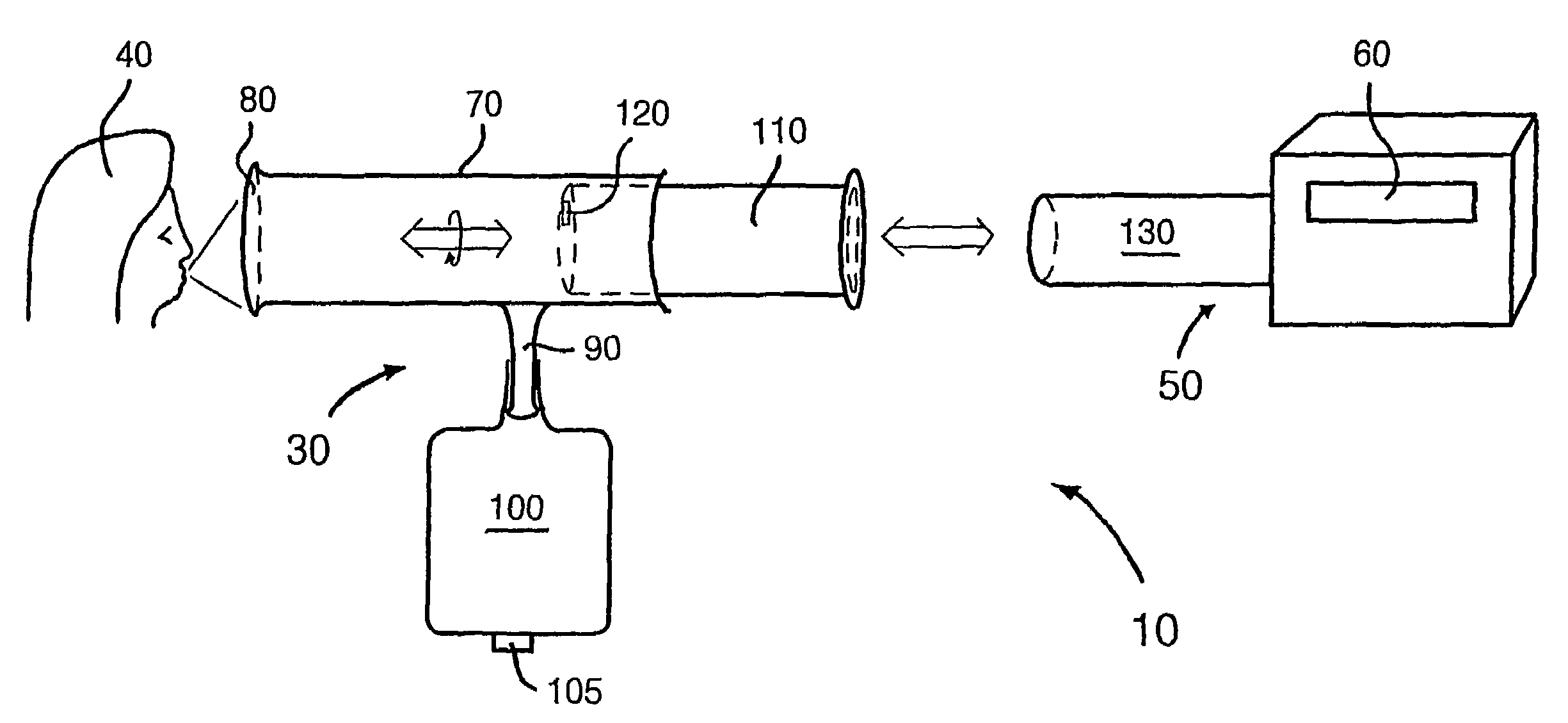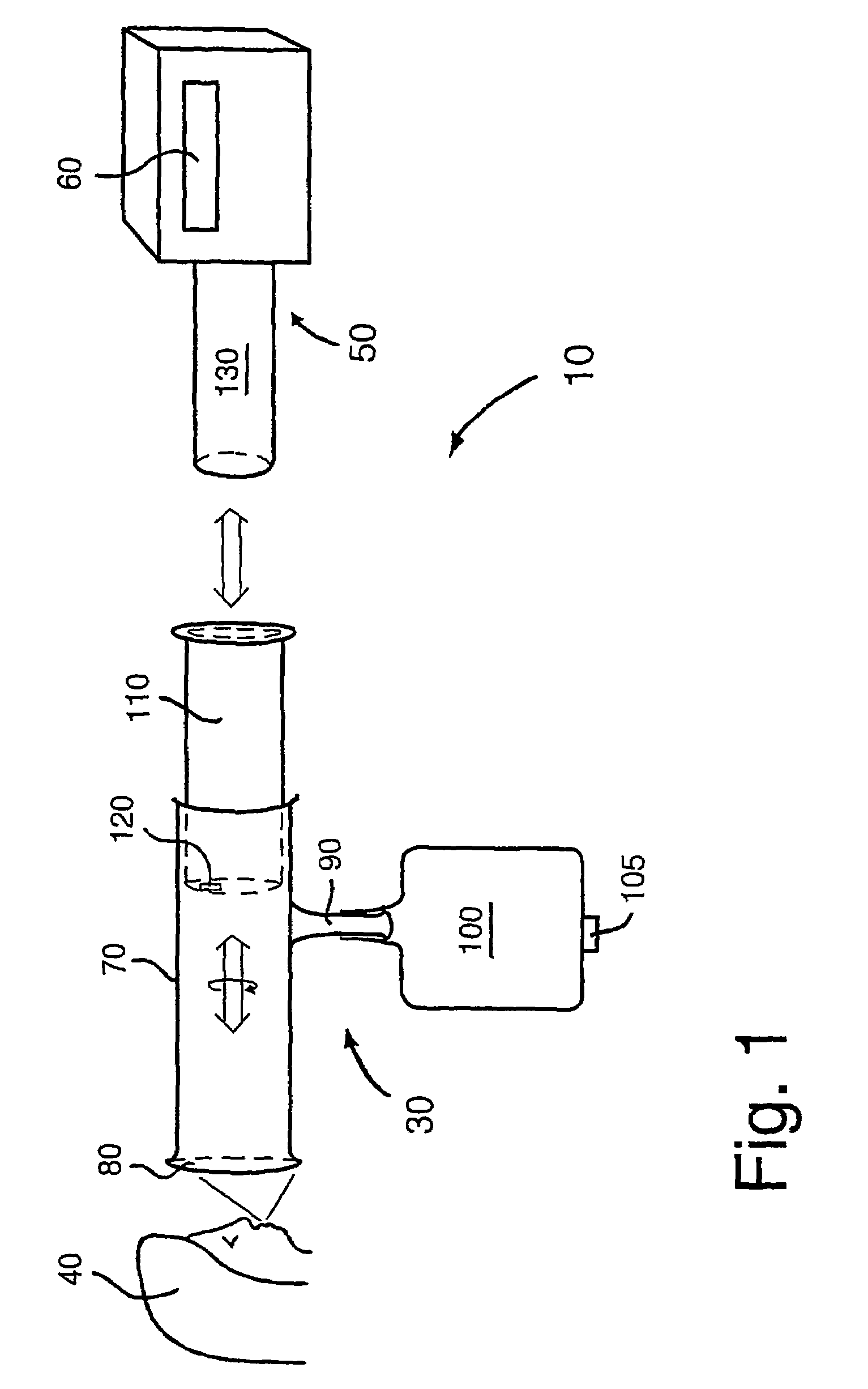Biological measurement system
a biosensor and measurement system technology, applied in the field of biological measurement systems, can solve the problems of affecting the signal level detected at the waveguide, further complicating the biosensor and the complexity of the signal level observed, and reducing the risk of spreading disease, reducing the cost and size of the apparatus, and being highly compact.
- Summary
- Abstract
- Description
- Claims
- Application Information
AI Technical Summary
Benefits of technology
Problems solved by technology
Method used
Image
Examples
Embodiment Construction
[0237]In the following description, embodiments of a biological measurement system will initially be described in overview. Later, component parts of the embodiments and their associated biochemistry will be described in more detail.
[0238]The system described herein employs evanescent wave spectroscopy and evanescent wave fluorimetry to detect the presence of a pathogenic substance using an immunoassay technique.
1. System Overview
[0239]Referring firstly to FIG. 1, there is shown a biological measurement system according to the invention. The system is indicated generally by 10 and comprises a sample collection unit indicated by 30, and a corresponding complementary reader unit indicated by 50. For displaying test results, the reader unit 50 includes a readout display 60. The collection unit 30 is adapted for collecting exhaled material from a user 40, such material providing test samples for subsequent analysis.
[0240]The collection unit 30 is designed to engage mechanically into the...
PUM
| Property | Measurement | Unit |
|---|---|---|
| diameters | aaaaa | aaaaa |
| diameters | aaaaa | aaaaa |
| droplet sizes | aaaaa | aaaaa |
Abstract
Description
Claims
Application Information
 Login to View More
Login to View More - R&D
- Intellectual Property
- Life Sciences
- Materials
- Tech Scout
- Unparalleled Data Quality
- Higher Quality Content
- 60% Fewer Hallucinations
Browse by: Latest US Patents, China's latest patents, Technical Efficacy Thesaurus, Application Domain, Technology Topic, Popular Technical Reports.
© 2025 PatSnap. All rights reserved.Legal|Privacy policy|Modern Slavery Act Transparency Statement|Sitemap|About US| Contact US: help@patsnap.com



